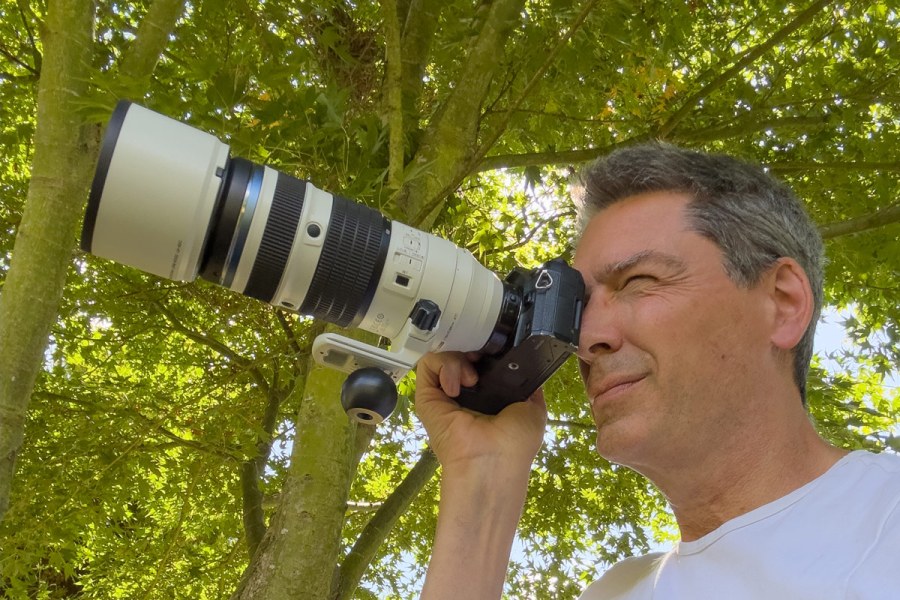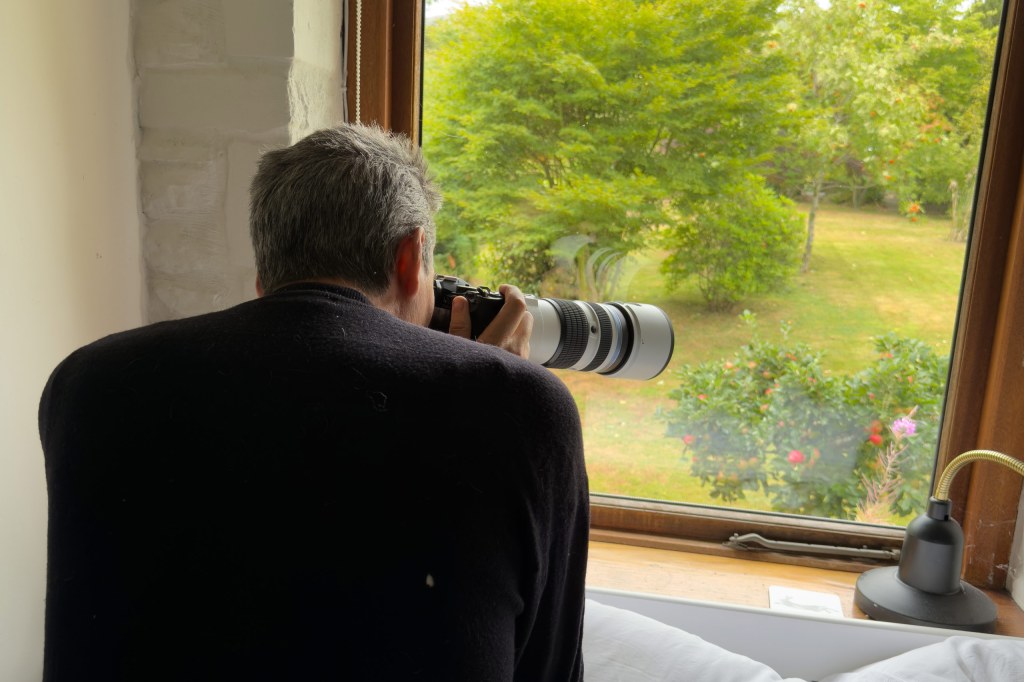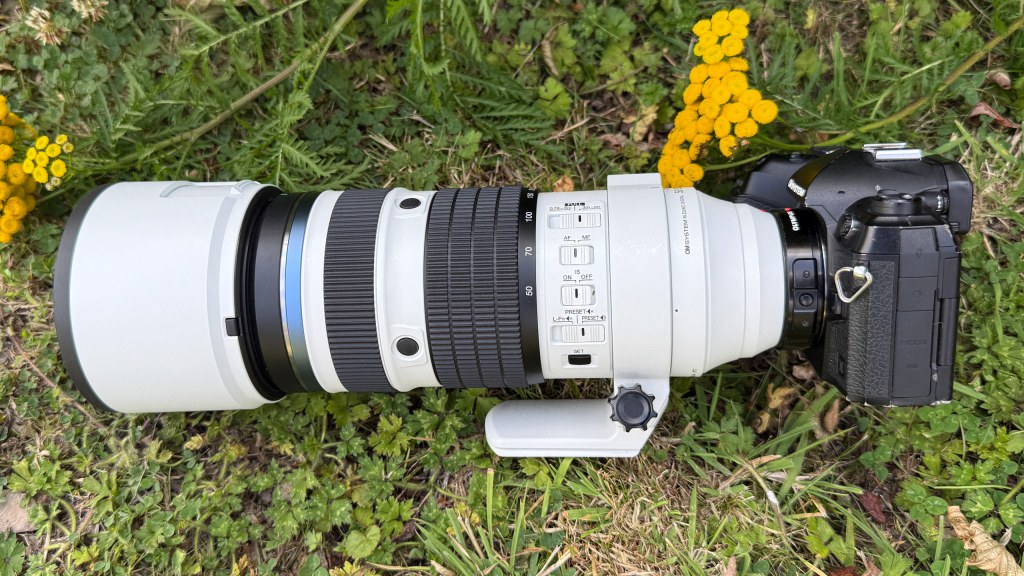OM System M.Zuiko Digital ED 50-200mm F2.8 IS Pro at a glance:
- $3699 / £2999
- 100-400mm equivalent range
- 7-stop image stabilisation
- 0.5x equivalent magnification
- IP53 weathersealing
- 225.8mm long, 1250g
- Micro Four Thirds mount
I work as a wildlife photographer in the UK, and have for many years now used OM System/Olympus kit for its light weight and size and the raw files that deliver great colour science. With the OM System OM-1 and OM System OM-1 Mark II cameras, I can now achieve decent dynamic range, and have much less worry about high ISO, as well-exposed files clean up nicely. But a camera body is only as good as the glass that focuses and captures the world around me.
Back in July, I was given the opportunity to test the OM System 50-200mm F2.8 IS Pro before it came out. What interested me was that potentially, this was three lenses in one. Firstly, the extra reach compared to the previous OM System 40-150mm f/2.8 meant it could be perfect for insect close-ups and insects in flight, while not getting too close to disturb. Secondly, as a full frame equivalent of a 100-400mm (and up to 800mm with teleconverters), it meant it could also work with birds. And thirdly, with the crazy minimum focus distance (giving 1:1 magnification with the 2x teleconverter), it could add macro abilities to its portfolio.
It’s a lot to ask of a lens, but my experience in testing convinced me this was an important addition my bag. So as soon as it came out, I ordered my copy. What I found alongside all of the above was an incredibly fast focusing, super-lightweight optic that gave professional results and that now, months later, I am only beginning to scratch the surface of. I have been able to test the lens in a variety of scenarios and really put it through its paces, and can safely say it’s as sharp and quick to focus and track as some of the best fast white glass on the market.
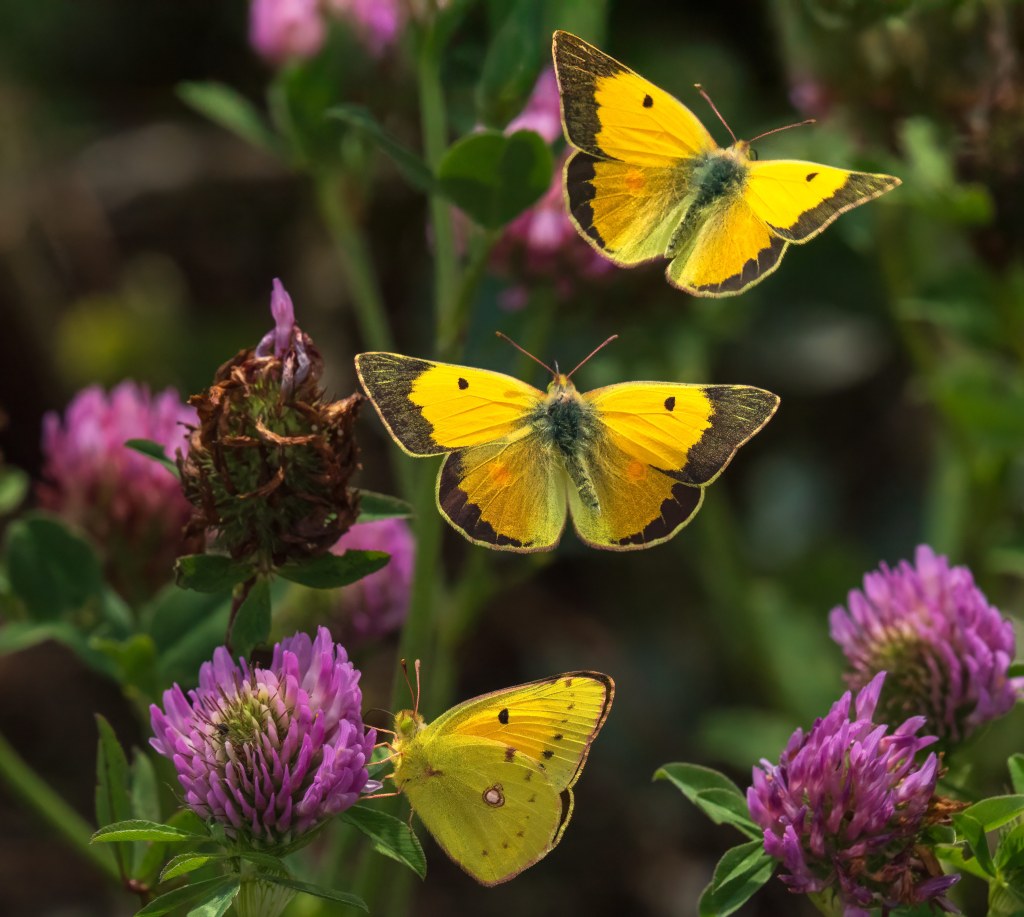
OM System 50-200mm F2.8 IS Pro – Weight and handling
The lens feels incredibly light and well-balanced in the hand, and comes out at 1.075kg on its own, or 1.25kg with the hood and tripod adaptor. With a shoulder strap, I had no issue carrying it for hours. This is the second white lens in the OM lineup and it totally complements my 150-400mm. Both the PRO designation and white coating to stop overheating indicate that this lens combines the best materials and R&D that OM could muster.
One of my first projects was a goldfinch nest in my neighbor’s garden. I was photographing through the window that looks into my next-door apple tree, and I used focus peaking to find the goldfinch and its eye as mum was sitting on the nest. Hand-holding for a long period of time until I got the shot was easy, and the IBIS meant I could slow the shutter speed down. The compact size – only 226mm by 94mm with internal zoom – meant I could easily slip it in rucksack alongside my thermos for a day’s walking.
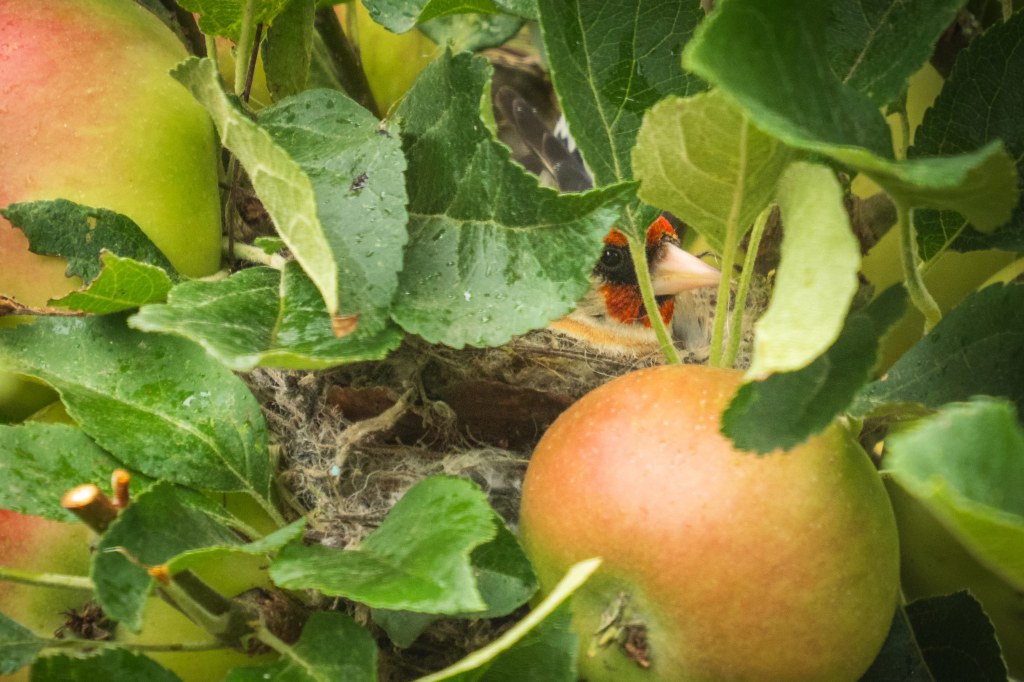
The usual pro-level switches on the side are quick to access, with the focus limiter useful for close detail and distant bird work. If you are working on a tripod and there is a particular perch where birds come into land, the Preset function allows you to save and instantly recall a specific focus distance with a button press, while the four L-Fn buttons around the barrel are programmable for various functions, including the Preset distance recall. It’s the first time I have used this feature and it’s incredibly convenient, especially if the spot you are recalling is surrounded by leaves or bushes, and the AF takes a moment to pick up the perch.
OM System 50-200mm F2.8 IS Pro – Sharp and fast
Of course, a pro-level lens should also be sharp and fast. OM lenses are renowned for their quality, and this is no exception. It is easily up there with my 300mm f/4, which up to now was the sharpest lens I owned. I had the 1.4x extender on most of the time and found little degradation in quality. The lens easily keeps up with bird detection and Pro-Capture, and the amazing 50fps with full autofocus that newer OM bodies deliver not presenting any issues, even with small garden birds like the dunnock in my garden.
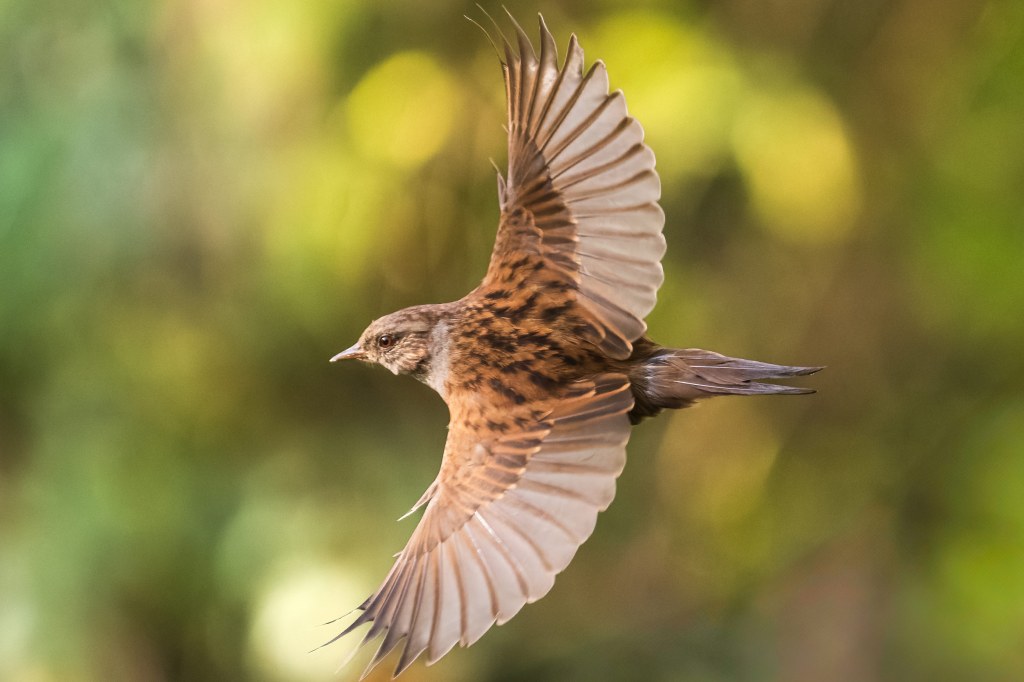
I decided to head out to the Stiperstones nature reserve and went full tilt by adding the 2x extender which gave me a 200-800mm f/5.6 set up. I spotted a nearby cuckoo and stalked carefully closer hoping for a take-off moment. I was set to pro-capture with bird AF and caught the gorgeous flare of wings. The laws of physics can’t be escaped and yes, there is a little bit of loss in sharpness. But I was pleased with the result.
OM System 50-200mm F2.8 IS Pro – Background and Bokeh
The criticism often thrown at Micro Four Thirds is that you can’t get decent bokeh. Although this has rarely been my experience, here we finally have a lens that can take backgrounds and turn them into a soft, un-distracting dream. At f/2.8 with the dunnock, I am blown away by the backdrop where distant leaves and bushes are perfectly out of focus.
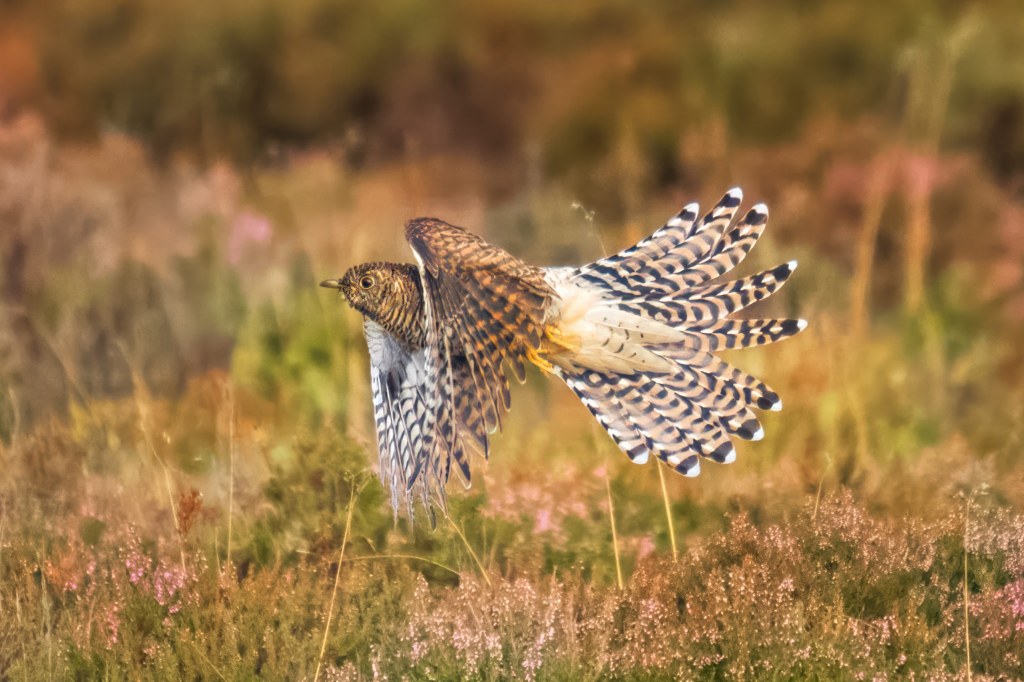
There is one thing that weighs heavily in this argument, and that is the minimum focus distance. My old Canon 100-400mm had an MFD of 0.98m and this lens has an MFD of 0.78m, however with twice the equivalent reach (using the 2x converter), this gets you in very close. And the closer you are, the more the background gets thrown out. At f/2.8, the subject pings out with an almost 3D effect. The point is that this lens not only handles subjects well, but is also considerate of all four corners of the frame. If you put the work in, you will get pleasing results.
OM System 50-200mm F2.8 IS Pro – Close up
It would be hard to say which area this lens excels at the most, but for my work, it would have to be insects, both portrait shots and flight captures. I love my 40-150mm f/2.8 but to get shots that fill the frame, I often have to get quite close, and this can make the insect fly off. That extra 100mm equivalent reach is a godsend, not only bringing me closer, but giving more of a pleasing background. It is a win-win situation.
Here, the excellent sharpness and lightning-fast AF means I am in with a chance of extraordinary flight sequences, such as with the obliging clouded yellow where colour rendition, tack sharp butterfly and perfect backdrop all combine. It’s also great for letting that f/2.8 aperture give you frames where the focus falls off in an almost impressionist effect.
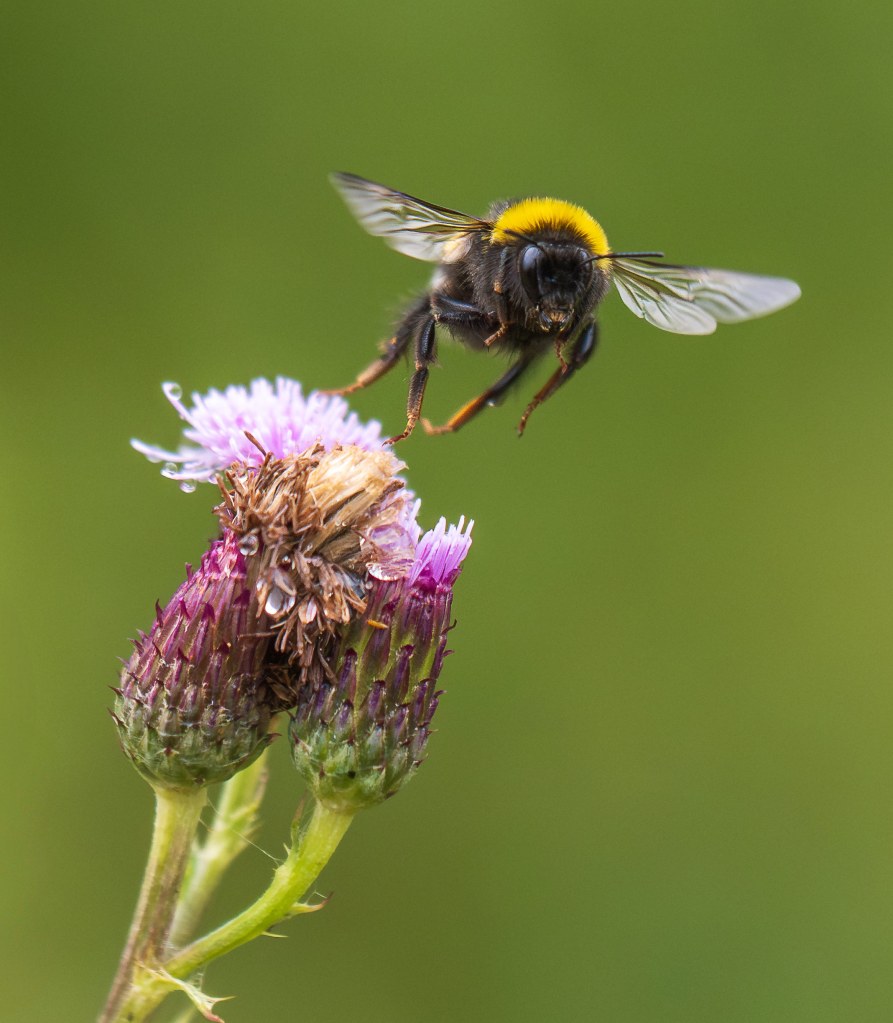
I have also used hand-held focus stacking with the 2x teleconverter to get incredible detail of spiders, bees and butterfly scales. The IBIS is almost unbelievable and even when setting stacking to 15 frames, as long as there is no breeze and the insect is staying still, the out-of-camera JPEGS can give you front to back depth-of-field. That said, I would still want OM eventually to extend this feature up 30 frames and give you a resulting DNG. While it will not replace my trusty 90mm f/2.8 macro, it does mean that in the field I can swap instantly from flight and portrait to more intense details.
The verdict: One Lens to rule them all
I put a question mark at the beginning of my review, asking if the 50-200mm is indeed an all-terrain vehicle. Yes, there are caveats – for bird photography where subjects are some distance away, of course I would always go for my 150-400mm, while for 2:1 and further macro, I would look elsewhere. But for garden birds, insects of all sorts and days out at bird reserves where the birds are closer, this lens is fabulous. In fact, my 40-150mm f/2.8 has now been put back on the shelf where it is gathering dust.
Is it worth it? The price of £2,999 seems steep, but it is the full-frame equivalent of a 100-400 f/2.8. In size and weight and price, it’s a lot cheaper than any 400 f/2.8 lenses out there. In my mind you get a hell of a lot for your money and for serious wildlife photographers I would say this is quite the game changer.
Also, there are many areas where I haven’t yet taken advantage of its qualities – on safari, or with badgers, foxes and owls at dawn and dusk where that F2.8 really gives one more latitude. This could also be a great lens for moon and sun and compressed landscape shots, and surely this could also be very useful for sports?
This lens is a real triumph from OM and has filled a very important gap in their lineup. I am excited about the shots that I will achieve in the next few years, and am already seeing some stunning work from the wildlife community. It’s five stars from me!
Related reading:
- OM System 50-200mm F2.8 IS Pro review: top-notch telezoom
- OM System 150-600mm F5.0-6.3 IS review – the ultimate lens for wildlife photography?
- OM System M.Zuiko Digital ED 20mm F1.4 Pro review
- Top tips for achieving sharper wildlife photos
Follow AP on Facebook, Instagram, YouTube and TikTok.

